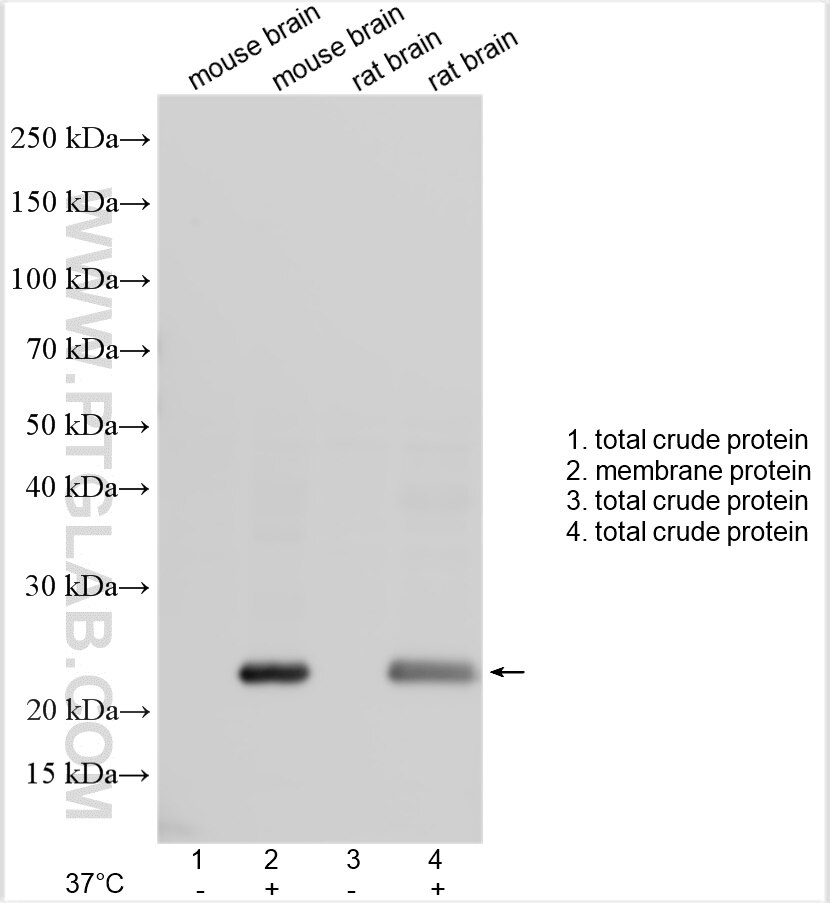Anticorps Polyclonal de lapin anti-NIPA1
NIPA1 Polyclonal Antibody for WB, ELISA
Hôte / Isotype
Lapin / IgG
Réactivité testée
Humain, rat, souris
Applications
WB, ELISA
Conjugaison
Non conjugué
N° de cat : 27077-1-AP
Synonymes
Galerie de données de validation
Applications testées
| Résultats positifs en WB | tissu cérébral de souris, tissu cérébral de rat |
Dilution recommandée
| Application | Dilution |
|---|---|
| Western Blot (WB) | WB : 1:1000-1:4000 |
| It is recommended that this reagent should be titrated in each testing system to obtain optimal results. | |
| Sample-dependent, check data in validation data gallery | |
Informations sur le produit
27077-1-AP cible NIPA1 dans les applications de WB, ELISA et montre une réactivité avec des échantillons Humain, rat, souris
| Réactivité | Humain, rat, souris |
| Hôte / Isotype | Lapin / IgG |
| Clonalité | Polyclonal |
| Type | Anticorps |
| Immunogène | NIPA1 Protéine recombinante Ag23847 |
| Nom complet | non imprinted in Prader-Willi/Angelman syndrome 1 |
| Masse moléculaire calculée | 35 kDa |
| Poids moléculaire observé | 27 kDa |
| Numéro d’acquisition GenBank | BC025678 |
| Symbole du gène | NIPA1 |
| Identification du gène (NCBI) | 123606 |
| Conjugaison | Non conjugué |
| Forme | Liquide |
| Méthode de purification | Purification par affinité contre l'antigène |
| Tampon de stockage | PBS with 0.02% sodium azide and 50% glycerol |
| Conditions de stockage | Stocker à -20°C. Stable pendant un an après l'expédition. L'aliquotage n'est pas nécessaire pour le stockage à -20oC Les 20ul contiennent 0,1% de BSA. |
Informations générales
Nonimprinted in Prader-Willi/Angelman loci 1 (NIPA1, also known as SPG6) gene is located in the pericentromeric region of chromosome 15q and encodes a magnesium transporter located in the plasma membrane and early endosomes, implicated in neuronal development and maintenance (PMID: 17166836). NIPA1 is highly conserved along phylogeny and highly expressed in neuronal tissues.
Protocole
| Product Specific Protocols | |
|---|---|
| WB protocol for NIPA1 antibody 27077-1-AP | Download protocol |
| Standard Protocols | |
|---|---|
| Click here to view our Standard Protocols |


